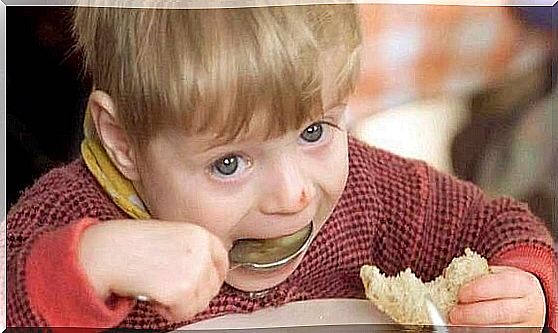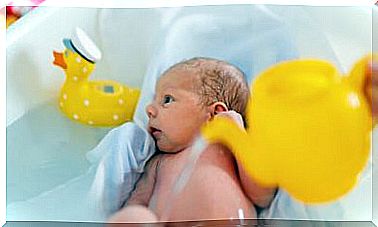What To Do When Your Child Is Choking?
There are two key points that will help you deal with a choking child: stay calm and act fast. It’s good to take a first aid course as soon as possible, knowing techniques and practicing them can help save your child’s life.
As explained by the Red Cross, the choking that occurs when a piece of food or a foreign body is lodged in the throat or airway, causes about 4,300 deaths a year.
signs of choking
The Red Cross also emphasizes the importance of recognizing when a person is choking and knowing what to do, whether at home or in a restaurant or other public place.
It should be noted that often when a child chokes, he may not cry or make sounds. It is possible for the child to catch in the throat or have a slight cough and difficulty breathing, making noise when inhaling.
Another sign is that the skin, lips and nails may turn blue or dark. You must help immediately to open the airway in order to get the child to breathe.
It is necessary, in addition to being beneficial and useful, to take a first aid course. It would be very positive that everyone who lives with children should learn the technique of cardiopulmonary resuscitation and also abdominal pressure. You never know when it will be needed.

What to do when someone chokes in your presence
Contrary to popular belief, it is not good to put your finger in the child’s mouth to try to extract the object, as your finger can push the object deeper into the child’s throat.
Techniques for children under one year:
Sit down. Place the baby face down, under your forearm, supporting your head with your hand and holding the neck
- Make sure the baby has his head slightly lower than the rest of his body to facilitate the expulsion of the object from his throat.
- Use the part of the palm closest to the wrist to give 5 quick presses between the baby’s shoulder blades.
- If the object is still stuck, put the baby’s mouth up and press the chest, placing the middle and ring finger on the child’s sternum, in the center of the imaginary line that separates the chest.
- The depth of pressures should be between half an inch and an inch. Apply pressure 5 times in a row.
- Look carefully at the baby’s mouth to see if the object in the throat has come out.
- If the object has not come out, repeat steps 3 and 4 until the baby’s airway is clear and he breathes normally.

For children over one year:
- Stay right behind the child. Get on your knees if necessary.
- Place one of your arms diagonally across the child’s chest and lean forward.
- Use the part of the palm of your hand closest to the wrist to give five quick presses between the child’s shoulder blades.
- If the object is still stuck, do five abdominal pressures:
- Put your arms around the child’s waist.
- Close your hand as if grabbing something. Place the wrist with the thumb side up, directly above the navel.
- Grasp the wrist with the other hand, as if giving support.
- Give short, quick pressures by pushing in and up.
- Do not lift the child off the ground while you are pressing.
- Continue alternating 5 blows to the back and 5 pressures to the abdomen until the object that is clogging the airways comes out.
- If the child is able to cough, encourage him to do so.
- If he can no longer cough and remains conscious, pat his back a few times.
If the child stops breathing:
- Place the child on a firm, flat surface such as a table or floor.
- If you are accompanied, ask someone else to call 192 right away while you begin cardiopulmonary resuscitation for babies.
- Concentrate pressure on the chest.
- Alternate mouth-to-mouth resuscitation if you feel comfortable doing so.
If you’re alone, start with 2 minutes of baby cardiopulmonary resuscitation and then call 192. And continue through the process.

How can you avoid choking?
The International Red Cross recommends taking the following precautions in case of choking in infants and children:
- Keep small objects and toys out of the reach of children, especially if the child is under three years old.
- Prevent children from running, playing or walking with food or toys in their mouths.
- Children under 4 years of age should not eat foods that can easily get lodged in their throats, such as sausages, nuts, small pieces of meat or cheese, grapes, hard or sticky sweets, popcorn, small pieces of butter or raw carrots.
- Watch small children during meals.
- Prevent older siblings from giving dangerous food or toys to a young child.
- Avoid that very young children eat nuts, gums, or play with small or non-recommended objects for their age.
- Never let them play with tossing candy or nuts up to catch with their mouth.
- Don’t make them eat by forcefully putting food in their mouth









